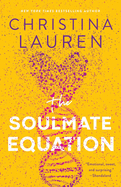
| Publisher: | Gallery Books | |
| Genre: | Women, Romantic Comedy, Humorous, General, Romance, Fiction | |
| ISBN: | 9781982123963 | |
| Pub Date: | May 2021 | |
| Price: | $26 |
| Fiction |
by Christina Lauren
Christina Lauren, the author duo behind In a Holidaze and The Unhoneymooners, have created a novel with a fascinating blend of modern science and old-fashioned attraction in The Soulmate Equation. Jess Davis is a struggling single mom, raising her precocious seven-year-old daughter, Juno, with the help of her grandparents. When Jess's best friend whimsically signs up for a new matchmaking service, GeneticAlly, that promises to scientifically match you with your soulmate based on your DNA, Jess is unconvinced. But, on a dare, she submits a sample--only to discover that she's a 98% match with Dr. River Peña, the founder of GeneticAlly. GeneticAlly's claims must be nonsense, because Jess already knows Dr. Peña--he's the grumpy man at the coffee shop where she does her freelance accounting work. But after one of those accounting jobs dries up, and GeneticAlly offers to pay Jess to date River, to see if they truly are a match, Jess can't turn down the offer. And slowly, as she gets to know him, Jess discovers that maybe she and River are a match after all.
Sweet and thoughtful, The Soulmate Equation explores what makes people click, and whether there is indeed a genetic component to attraction. Jess and River's cautious relationship, and the funny wrench in things that Juno creates, are completely believable, despite the initially farfetched premise. Fans of Beach Read or The Rosie Project are sure to love The Soulmate Equation. --Jessica Howard, bookseller at Bookmans, Tucson, Ariz.
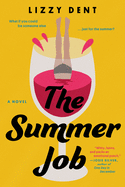
| Publisher: | Putnam | |
| Genre: | Women, Romance, Contemporary, Coming of Age, Fiction | |
| ISBN: | 9780593328118 | |
| Pub Date: | May 2021 | |
| Price: | $16 |
| Fiction |
by Lizzy Dent
The Summer Job by Lizzy Dent is a sweet, poignant romance that starts when two good friends each make a bad choice. Anyone who's ever made a terrible mistake, only to realize it was a blessing in disguise, is sure to relate. Heather is a renowned sommelier who has been hired to spend the summer working in a Scottish hotel. But she blows off the gig to head to Italy with her ne'er-do-well boyfriend. Heather's roommate and best friend, Birdy, is at a loss for what to do, because Heather, who pays for their flat, needs to sublet it while she's away. Desperate for a place to stay, on a drunken whim she heads to Scotland, pretending to be Heather.
Only it turns out that it's a big, fancy hotel, not the small deal that Heather made it out to be. And "Heather" is in way, way over her head. Determined not to ruin Heather's reputation, Birdy gives herself a crash course in wine tasting and finds herself falling in love with both the hotel staff--especially James, the chef--and the Scottish countryside. Could this finally be the home that Birdy has spent her life searching for?
Funny and heartwarming, The Summer Job is a delightful summer escape. Birdy's antics are a bit cringeworthy at first, but slowly she realizes the importance of honesty and belonging, and begins a personal transformation. The Scottish setting is pure magic, and fans of Emily Henry or Sophie Kinsella will fall for debut novelist Lizzy Dent.--Jessica Howard, bookseller at Bookmans, Tucson, Ariz.
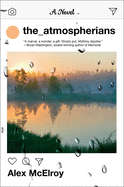
| Publisher: | Atria Books | |
| Genre: | Feminist, Dystopian, Literary, Fiction | |
| ISBN: | 9781982158309 | |
| Pub Date: | May 2021 | |
| Price: | $27 |
| Fiction |
by Alex McElroy
A fallen influencer reluctantly reinvents herself as a cult leader in this surreal, satirical debut.
Sasha Marcus's profile as a skincare and wellness guru was skyrocketing when a confrontation with an online harasser brought it crashing down, getting her fired from her day job and dumped in the process. She seems to be alone in the world until her childhood friend Dyson appears, asking her to join him in his new business venture: a cult to reform problematic men.
From early in the story as she tells it, it's apparent that something major came of their enterprise and that something went wrong. She refers to being asked about Dyson in a way that makes it clear he is no longer available to ask directly. There is a slightly ominous tone along with an absurdist bite; men have been spontaneously coming together in "man hordes" that may perform mundane tasks like washing all the windows at a nursing home or may break into a house and strangle a dog. Dyson describes the cult he names the Atmosphere as a solution for depressed white men who are a danger to themselves, whom he convinces to join with a false promise of job training. But Sasha is less certain about his motives, and about being the lone woman at a camp for desperate men.
Suspenseful and bitingly funny, The Atmospherians by Alex McElroy is a sharp satire of self-help and influencer culture. --Kristen Allen-Vogel, information services librarian at Dayton Metro Library

| Publisher: | Berkley | |
| Genre: | Women, Family Life, Humorous, General, Fiction | |
| ISBN: | 9780593199725 | |
| Pub Date: | May 2021 | |
| Price: | $16 |
| Fiction |
by Elyssa Friedland
In this bittersweet, nostalgic summer getaway of a novel, Elyssa Friedland (The Floating Feldmans) brings two families full circle over the fate of a storied hotel they've owned together for three generations.
The Golden, a luxury hotel compound in the Catskills built by lifelong best friends and business partners Benny Goldman and Amos Weingold in 1960, has lost its shine in the modern era of trendy, Instagrammable getaways. Benny recently died, leaving Amos feeling adrift, and the families stopped socializing together years ago. When a development company offers to buy the Golden, three generations of Goldmans and Weingolds gather at the hotel: the elderly originals; their adult, midlife-crisis-afflicted children; and their tech-savvy, relationship-challenged young adult grandkids. Old tensions and new romances arise as they decide if the nostalgia and storied legacy of the hotel can save it, or if they're having their last summer at the Golden.
Family secrets abound and existential crises flourish in this exuberant love letter to the Borscht Belt, but readers will find plenty of laughs and heartwarming moments in the mix as relationships heal and new ties form. Friedland conjures the ghost of bygone glamour and lingering conflict masterfully as the families argue, reminisce and learn "goat excrement is totally washable" in an ill-fated exploration into trendy hotel activities. Episodes of intergenerational disconnect contrasted with unshakeable family bonds make Last Summer at the Golden Hotel a great choice for fans of Schitt's Creek and feel-good family dramedies. --Jaclyn Fulwood, blogger at Infinite Reads
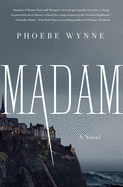
| Publisher: | St. Martin's Press | |
| Genre: | Women, Feminist, Gothic, Fiction | |
| ISBN: | 9781250272041 | |
| Pub Date: | May 2021 | |
| Price: | $27.99 |
| Fiction |
by Phoebe Wynne
Madam, Phoebe Wynne's debut, is a deliciously gothic take on patriarchy, class and the purpose of education. Rose is a young classics teacher just hired by Caldonbrae Hall, an elite girls' boarding school hidden away in a remote corner of Scotland. It's 1993, a time when girls and women are supposed to have already been liberated from the strictures of gender and tradition that prevent them from seeking their own paths in life. But what Rose finds in her new post is a claustrophobic, regressive atmosphere filled with secrets and the simmering tension one expects in a gothic novel.
There are no jump scares, no dead rabbits hanging from a doorway, but it's in small moments that Rose realizes the truth of her situation, such as when a guard won't let her leave the school premises: " 'I'm not permitted to let anyone out by foot.'/ .../ 'Can't I just go through and you look the other way?'/ 'Course not!' he almost shouted. 'They're recording everything.' "
As she attempts to settle in at Caldonbrae, Rose is initially optimistic and dedicated to her subject matter and students. It's not long before she discovers that her new pupils are not especially interested in Latin or education, however, and that they're often vicious to her and each other. Strange things start happening. Without escape as an option and with more disturbing details emerging every day, Rose tries to change things from within. Madam is a haunting, atmospheric novel about agency, power and the things people do to keep both. --Suzanne Krohn, editor, Love in Panels

| Publisher: | Park Row | |
| Genre: | Women, Friendship, Fiction, Historical, World War II, Jewish | |
| ISBN: | 9780778389385 | |
| Pub Date: | May 2021 | |
| Price: | $17.99 |
| Fiction |
by Pam Jenoff
If one is ever worried that the genre of World War II fiction might have become overstuffed, turn to Pam Jenoff for a quick recalibration. Time and again, the author has demonstrated such a keen eye for research that her books all but burst with originality, even in a field where seemingly every angle has been covered at least twice. Her latest, The Woman with the Blue Star, is no different.
In The Woman with the Blue Star, two young Polish women from opposite backgrounds come together through the hazy light of a sewer grate. Sadie Gault, forced out of her decrepit apartment in the Jewish ghetto in Kraków by the encroaching German forces, lives underground with her pregnant mother and another family, surviving on potatoes and hungry flickers of light. Meanwhile, Catholic Ella Stepanek lounges in a fine house across the city, where her stepmother regularly hosts Nazi guests. But Ella hates the Nazis, hates what they've done to her country and its people, and her anger ignites a bravery she didn't know she possessed.
When Ella sees a girl's face in the shadows of a sewer grate, she's tempted to ignore what she witnessed. Instead, her conscience lures her back, and she returns again and again, becoming Sadie's lifeline as well as her closest friend. But keeping Sadie alive puts her own life at risk, as well as those of Sadie and her own connections--including the resistance fighter she's fallen in love with. Eventually, bringing small bundles of food to Sadie becomes untenable, and the friends hatch a plan to ferry her and the other sewer-dwellers to safety. But if rumors reach the Germans and they decide to search the tunnels, all will be lost. To spar against the near-impossible odds, they'll need to trust others, and that means bringing more allies into imminent danger.
Jenoff, who is no stranger to World War II fiction--her other works include The Orphan's Tale, The Kommandant's Girl and The Lost Girls of Paris--often bases her novels on real events, and The Woman with the Blue Star is no different. As a member of the Foreign Service, Jenoff was assigned to the U.S. Consulate in Kraków in the '90s and fell deeply in love with Poland, which eventually led her to the story of Leopold Socha, a sewer worker who aided Jews hiding underground during the war. The novel she has spun from this piece of history is a startling adventure that never feels fantastical, and is so surrounded by real events that it's impossible to escape the horror.
It is similarly impossible to separate The Woman with the Blue Star from the context in which it was written and released. The story is about courage, survival and friendship, but also largely about isolation, and the way such separation from the thrum of life tears at our sanity. Jenoff wrote much of the book during the pandemic-induced quarantine, and many readers will only just be getting back to some semblance of normalcy when they read it. The pain of the past year will still feel raw. Although it would be wrong to equate what happened to people like Sadie during World War II with what has happened in 2020 and 2021, many readers will nevertheless recognize Sophie's bored despair. With so much collective loss and grief, plus little way to share it with the outside world, life loses its color. Survival starts to have little meaning. It takes another--in Sadie's case, an outsider like Ella--to remind us for what, and for whom, we're fighting. The Woman with the Blue Star accomplishes this with a gasping, heart-wrenching finale, one readers will not be able to stop thinking about. The result is not the save-the-day scenario of comic books; that would be too trite, too unrealistic. Instead, there is enormous loss. But that rings true, and readers will appreciate the equal timbre of solemnity and hope that echoes after the novel ends.
This is a story of surprising complexity within such an insular setting. Writing an adventure set within the confines of a concrete tunnel is no easy feat, and even trickier is the ability to make isolation feel motivating rather than debilitating. Sadie and Ella are inundated with grief, yet it never drowns the reader; instead, it compels them to dive deeper and deeper into the story. The Woman with the Blue Star is a mesmerizing tale of courage and heartbreak in an almost inconceivable time--a time that should never be forgotten. --Lauren Puckett
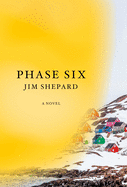
| Publisher: | Knopf | |
| Genre: | Disaster, Medical, Literary, Thrillers, Fiction | |
| ISBN: | 9780525655459 | |
| Pub Date: | May 2021 | |
| Price: | $26.95 |
| Mystery & Thriller |
by Jim Shepard
A propulsive and prophetic thriller, Jim Shepard's Phase Six is a devastating look at an all-too-familiar, near-future pandemic. Eleven-year-old Aleq and his best friend love exploring the edges of their isolated small town on the coast of Greenland. But when they come back sick from playing near a mining site, their flu-like symptoms are just the beginning. Soon, the mysterious and vastly contagious illness sweeps through the town, killing everyone Aleq knows, and he is transferred to a CDC facility where two women, Jeannine and Danice, are leading the research team. But the contagion is spreading faster than they can contain it, and the world has learned no lessons from the Covid-19 pandemic that occurred not long ago.
Haunting and sparse, Shepard's (The Book of Aron) prose stays crisp and readable, even as it details an uncannily recognizable story of mass panic, unmanageable death and psychologized guilt. The novel's opening, which focuses on the quiet life of two adventurous boys in a small town, is infused with an atmosphere of fast-growing catastrophe. These opening pages movingly convey a sense of waiting for the other shoe to drop. And while the gripping plot moves at a fast pace, this atmosphere pervades the story with a chilly self-awareness. The predictability of the spread and the inevitability of its outcomes are reminders that the true villain of this story is not Covid-19 or the mysterious illness that seems to spread as easily as fear itself. Instead, readers begin to realize, as Jeannie does before a breakup, "Maybe the problem is me." --Alice Martin, freelance writer and editor
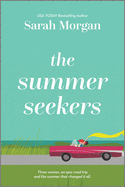
| Publisher: | Harlequin | |
| Genre: | Women, Romantic Comedy, Friendship, Family Life, Romance, Contemporary, Marriage & Divorce, Fiction | |
| ISBN: | 9781335180926 | |
| Pub Date: | May 2021 | |
| Price: | $15.99 |
| Romance |
by Sarah Morgan
In The Summer Seekers, her seventh standalone novel, British author Sarah Morgan weaves together the lives and tentative hopes of three very different women. After fending off an intruder with a cast-iron skillet, octogenarian Kathleen--a former travel show host--decides she's had enough of sitting at home. Her hyper-organized daughter, Liza, tries to convince Kathleen to move to assisted living, but Kathleen does the opposite: she hires a young woman to drive her on a road trip across the U.S.
Never one for showing or exploring her emotions, Kathleen has always preferred to be on the move, traveling often for business and pleasure even when Liza was young. Liza herself, worn down by the constant demands of work and parenting teenage twins, has always longed for a closer connection with her mother, but doesn't know where to start. And Martha, Kathleen's driver, is escaping a bad breakup, while hoping she can fake confidence behind the wheel until she figures out how to drive. As the summer goes on, all three women learn more about themselves--thanks in part to Liza's discovery of a stack of letters that hold clues to Kathleen's past--than they ever expected.
Morgan's breezy writing style draws readers in immediately, and her wisecracking dialogue entertains while providing insights into her characters' thoughts. Kathleen and Martha have their share of road-trip adventures, but it's Liza who is most surprised by her mother's calls back home. Warm, funny and often insightful, The Summer Seekers is a satisfying dose of escapism with plenty of heart. --Katie Noah Gibson, blogger at Cakes, Tea and Dreams
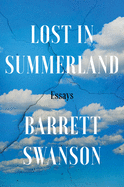
| Publisher: | Counterpoint | |
| Genre: | American - General, Men's Studies, Anthropology, Cultural & Social, Violence in Society, Literary Collections, Social Science, Essays, Ethnic Studies | |
| ISBN: | 9781640094185 | |
| Pub Date: | May 2021 | |
| Price: | $26 |
| Starred | Social Science |
by Barrett Swanson
In Lost in Summerland, Barrett Swanson's eloquent and insightful collection of 14 essays, nothing is simple, and everything has a dark side. A contributing editor at Harper's, Swanson is adept at drawing incisive and sometimes disturbing connections between the searing, often harrowing, experiences that determine an individual's fate within the greater cultural forces and narratives at play. In "Consciousness Razing," he finds himself at Evryman, an all-male retreat where attendees are encouraged to express their emotions (primarily anger) but not necessarily to question the source of toxic masculinity or its tragic consequences: "Several of these men struggled with addiction and depression... but the more common complaint was something vaguer--a quiet desperation that... seemed to stem from a gnawing sense of purposelessness." In "Calling Audibles," Swanson, who was a quarterback in high school, highlights the troubling comparison between football and war, especially since the game provided a necessary conduit for Swanson and his father to communicate and connect without words.
While much of this collection is reported with a certain sense of journalistic distance, Swanson is also transparent about his personal struggles with depression and various unhealthy trauma responses. With clever, elegiac prose that is as thoughtful as it is amusing, Swanson, a Pushcart Prize-winner whose impressive litany of publications includes the New Yorker and the Paris Review, proves that his is an essential voice in the critique of a simultaneously surreal and vulgar modern age. --Angela Lutz, freelance reviewer
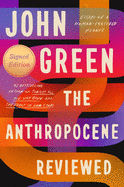
| Publisher: | Dutton | |
| Genre: | Biography & Autobiography, Personal Memoirs, Literary Collections, Social Science, Essays | |
| ISBN: | 9780525555216 | |
| Pub Date: | May 2021 | |
| Price: | $28 |
| Starred | Essays & Criticism |
by John Green
Each of the 44 entries in John Green's collection, The Anthropocene Reviewed: Essays on a Human-Centered Planet, is a small gem, polished to near perfection. Most began as scripts for his podcast by the same name: "The Anthropocene is a proposed term for the current geologic age, in which humans have profoundly reshaped the planet and its biodiversity," Green explains, and in each essay, he "reviews different facets of the planet on a five-star scale."
The subjects vary wildly. He devotes an essay each to time-tested songs such as "You'll Never Walk Alone" and "Auld Lang Syne," as well as more recent favorites like "New Partner" and anything by the Mountain Goats. Sports essays cover everything from Liverpool football ("Jerzy Dudek's Performance on May 25, 2005") and American baseball (Rick Ankiel's series of wild pitches on October 3, 2000, in "The Yips") to "The Nathan's Famous Hot Dog Eating Contest" on Coney Island ("I'll concede that competitive eating is a sport," writes Green). He devotes several essays to the ubiquitous staples of the Anthropocene: "The Internet," "CNN" and "The QWERTY Keyboard."
Through such wide-ranging frames emerge Green's (The Fault in Our Stars; Turtles All the Way Down) views on feminism and fatherhood, love and literature, art and nature, poverty and the planet, inviting readers into the questions and conversations. What unites them is his uncanny ability to structure each piece as both a critique of human foibles and an embracing of them--often concluding with an element of surprise. Five stars. --Jennifer M. Brown, senior editor, Shelf Awareness
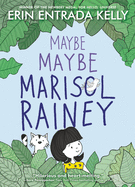
| Publisher: | Greenwillow Books/HarperCollins | |
| Genre: | Friendship, Emotions & Feelings, Humorous Stories, Parents, Family, Social Themes, Imagination & Play, Self-Esteem & Self-Reliance, Juvenile Fiction | |
| ISBN: | 9780062970428 | |
| Pub Date: | May 2021 | |
| Price: | $16.99 |
| Children's & Young Adult |
by Erin Entrada Kelly
Newbery Medalist Erin Entrada Kelly (Hello Universe; Lalani of the Distant Sea) tells a compassionate, uplifting story of a very creative girl who is afraid of taking risks in Maybe Maybe Marisol Rainey.
Eight-year-old Marisol Rainey lives in Getty, La., with her 12-year-old brother, Oz, her mother and sometimes her dad, who mostly lives and works on an oil rig in the Gulf of Mexico. She has a huge imagination and loves naming the inanimate objects around her home: Buster Keaton the refrigerator, Betty Bigmouth the sofa and Peppina the large magnolia tree in the backyard. Everyone seems to think Peppina is "the best tree ever" and is perfect for climbing. That is, everyone except Marisol, because "Peppina is very tall. And Marisol's legs are very short." Mostly, though, because "falling is one of Marisol's greatest fears." Marisol would love to climb the tree to connect with her mother, who talks about climbing kalachuchi trees when she was young in the Philippines. So, when her best friend, Jada, finds a bird's nest high up in Peppina's branches, Marisol becomes determined to perch on that branch alongside the nest.
Maybe Maybe Marisol Rainey is broken up into short chapters with accessible writing for children on the younger side of middle-grade. The author's own art is featured throughout, her sweet, entertaining black-and-white illustrations adding an extra note of fun to the story. This is the perfect book for a creative, sensitive and apprehensive child who might simply need an extra push to take a chance. --Natasha Harris, freelance reviewer
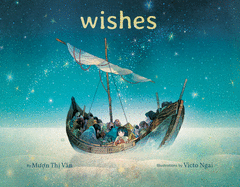
| Publisher: | Orchard Books | |
| Genre: | People & Places, Emigration & Immigration, United States - Asian American, General (see also headings under Social Themes), Family, Social Themes, Juvenile Fiction | |
| ISBN: | 9781338305890 | |
| Pub Date: | May 2021 | |
| Price: | $18.99 |
| Starred | Children's & Young Adult |
by Muon Thi Van, illust. by Victo Ngai
Muon Thi Van (In a Village by the Sea) gives voice to a series of inanimate objects in Wishes, creating a deeply personal account of the harrowing journey one Vietnamese child and her family take as they leave their home for a new, unknown one.
The child looks on while adult family members prepare for departure. As the grandfather digs up a buried case, "the night wished it was quieter." Three women in the kitchen pack food in a bag that "wished it was deeper." When they wake younger siblings, "the dream wished it was longer." And when it's time for the travelers to leave beloved family members behind, "the clock wished it was slower." The mother and young children walk a long path and board a packed boat to ride upon a sea that "wished it was calmer." The sun beats down, "the heart wished it was stronger" and "home wished it was closer." Finally, a larger boat appears, bringing with it hope for a future filled with kinder wishes.
The author's choice of narrators elicits a surprising wealth of emotion, evoking distinct and tactile sensations of hardship, perseverance and hope upon arriving at a new shore. The understated wording is enhanced by the art of Victo Ngai (illustrator of Dazzle Ships), which is stylized though realistic, in a lush subdued palette. According to an artist's note, it was Ngai's goal to "exercise restraint" in her art and to "glorify the imperfections." A note from the author provides deeper context and explains the story's roots in her own perilous escape from 1980s Viêt Nam. This book may be seen as their wish for "a safer, kinder, fairer, and more beautiful world." --Lynn Becker, blogger and host of Book Talk, a monthly online discussion of children's books for SCBWI
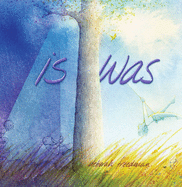
| Publisher: | Atheneum | |
| Genre: | Animals, General, Science & Nature, Imagination & Play, Juvenile Fiction | |
| ISBN: | 9781534475106 | |
| Pub Date: | May 2021 | |
| Price: | $17.99 |
| Children's & Young Adult |
by Deborah Freedman
Is Was is a sort of picture book documentary of a day's worth of occurrences in the natural world. The events are so commonplace--rain falls, a bird flies, a bee buzzes--that in true life they would be easy to ignore. Deborah Freedman's spare, sibilant text and radiant watercolor-and-pencil art ensure that her readers will be very much absorbed by nature's everyday doings.
The book opens with a scrim of whitish-gray clouds through which a triangle of blue sky is barely visible: "This sky is the same sky that was blue, but now is/ spilling down." The spill is captured in an illustration that shows the clouds releasing rain, which, one page later, becomes puddles: "This rain is is is/ was was was/ the same rain that was drips...." Is Was proceeds to introduce ordinary but dazzling natural incidents, up until the final illustration, which presents a purple sky, below which an adult and a child--perhaps the book's narrator all along?--studies the moon: "Still, this sky is/ the same sky/ that was."
Is Was reads like a poem, the odd "is" or "was" appearing to be forged by hand and literally written on the wind. It's a graphic liberty that Freedman (Carl and the Meaning of Life) puts to splendid use in order to reinforce the book's message: change is inevitable, but those who are paying attention will note that transformations always bring traces of the past ("was") into the present ("is"). --Nell Beram, freelance writer and YA author